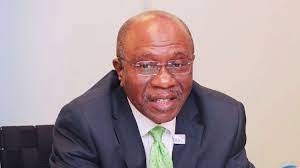The Monetary Policy Committee of the Central Bank of Nigeria on Tuesday again raised the Monetary Policy Rate from 13 per cent to 14 per cent. This came barely two months after the MPC, during its bi-monthly meeting in May, raised the benchmark interest rate from 11.5 per cent to 13 per cent.
The interest rate hike came barely one week after the National Bureau of Statistics put its June inflation figure for the economy at 18.6 per cent, the highest in five years. Inflation had hit 17.71 per cent in May, 2022.
The MPC had left the MPR unchanged for over two years. However crippling inflation, worsening purchasing power and their attendant effects on the economy appear to have forced the CBN to effect policy changes.
Speaking shortly after a two-day MPC meeting that started on Monday, the Governor, CBN, Mr Godwin Emefiele, argued that a new rate hike was necessary to put the economy on track.
Emefiele, who spoke in Lagos, said the MPC noted with concern the continued aggressive movement in inflation, even after the rate hike at its last meeting.

He expressed the committee’s unrelenting resolve to restore price stability while providing the necessary support to strengthen the fragile recovery.
Emefiele, while disclosing that all other parameters were left constant said, “In summary, the MPC voted to increase the MPR from 13.0 to 14.0 per cent; retain the asymmetric corridor at +100/-700 basis points around the MPR; retain the CRR at 27.5 per cent; and retain the Liquidity Ratio at 30 per cent.”
Emefiele added, “As regards tightening policy stance, members were unanimous that given the aggressive increase in inflation, coupled with the resultant negative consequences, particularly on the purchasing power of the poor, as well as retarding growth, there is the need to continue to tighten.
“However, the policy dilemma was hinged around the level of tightening needed to rein in inflation, without dampening manufacturing output, which could result from the higher cost of borrowing.”
However, experts in the financial sector have said the second hike in the lending rate at the MPC meeting reflected a panic situation on the part of the banking regulator with the signal of tougher times in the economy.
Aside from narrowing the negative real interest rate gap, he said members were also of the view that tightening would signal a strong determination of the bank to aggressively address its price stability mandate and portray the MPC’s sensitivity to the impact of inflation on vulnerable households and the need to improve their disposable income.
Emefiele said members also noted that the150 basis points hike by the committee in May 2022 had not permeated enough in the economy to halt the rising trend in inflation and noted that the month-on-month percentage increase in headline inflation rose sharply in June 2022 compared with May 2022.
The MPC, he noted, also noted that other complementary administrative measures deployed by the bank to address the growth in money supply did not moderate the inflationary trend.
Emefiele added that, “The Committee noted the Federal Government’s increasing debt profile and expressed concerns over debt sustainability given that global uncertainties remain elevated.
“The MPC thus reiterated its call to the Federal Government to urgently diversify its revenue sources through various initiatives, such as the development of a viable tax framework for the extractive and mineral export industries, to strengthen its fiscal buffers.”

